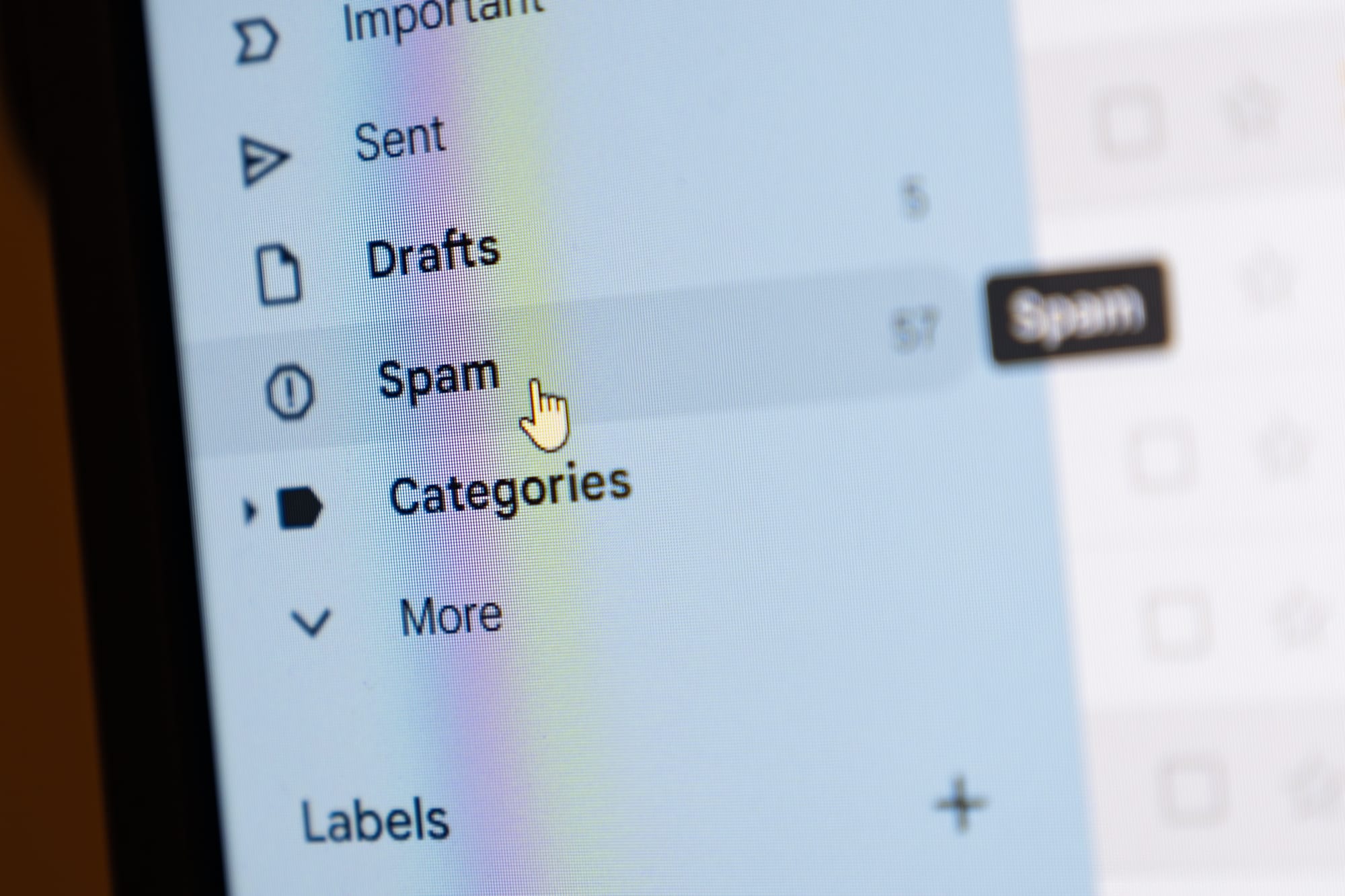This email is blacklisted. Those aren’t words that you want to have associated with your account. You need your email account to function perfectly if you're going to succeed in your business.
There’s a chance you’ve heard of email blacklisting before. You likely know that it’s not a good thing, but beyond that, you’re not sure what the specifics are or what it means for an account. Email blacklisting can be seriously damaging to a business’s ability to communicate with its customers or new prospects. Plus, it can tarnish its reputation.
In this article, we’ll share the details of email blacklisting, including how you might be able to avoid it.
- Is there an actual blacklist?
- What does it mean if my account is blacklisted?
- Can you tell if you are blacklisted?
What Is Email Blacklisting?
An email is blacklisted when a system blocks certain IP addresses or domains. These domains are usually added because they have sent what appears to be malicious content or spam. The lists themselves are held by Internet service providers (ISPs) or organizations. There are also some third-party platforms dedicated to eradicating spam that hold their own lists.
Blacklists came into being around the same time that spam began to increase. Spam started to reach uncontrollable levels in the early 2000s, and blacklists were a suitable counter to it. They act as gatekeepers, stopping unwelcome emails from unsuspecting users’ inboxes.
Many people think that if your email goes to spam, then your account has likely been blacklisted. That is, however, a common misconception. A spam folder is a way of categorizing and marking emails as unwelcome or not useful to the user. The email is still received but is sent to the spam folder. If a sender’s account is on a blacklist, the email will never be received. The sender’s IP address or domain is completely blocked.
What Does It Mean If You’re Blacklisted?

At first, it seems like an inconvenience. Then you realize that being blacklisted means you can’t effectively send out your new marketing campaign. You can’t send out your newsletter. Nobody will get your standard communication emails. Customers might not even receive orders. Being blacklisted is a big deal. It’s disastrous for your email deliverability.
Once your email is blacklisted, you’ll face more problems. Not sending emails is one thing, but quickly, that can escalate into financial problems. If customers don’t receive your communication or their order recognitions, they might stop using your services. Plus, they won’t participate in your offers if they don't receive your marketing.
Beyond the inconvenience and possible financial issues, there’s the effect it has on your reputation. Customers, clients, and partners won’t look kindly on a lack of communication. This is potentially disastrous for the perception people have of your brand.
Unfortunately, this isn’t something we can sugarcoat.
Common Reasons For Blacklisting
- Spam Complaints: This is one of the biggest red flags for ISPs and blacklist holders. If multiple recipients mark your received emails as spam, then it’s an indicator that something isn’t right. A one-off isn’t likely to result in blacklisting, but if it happens regularly, this is enough to warrant blacklisting.
- Bounce Rates: If your email list has a large number of wrong email addresses, it will increase your bounce rate. Bounces happen when an email is undelivered as the account is incorrect or no longer exists. A high bounce rate shows that an account admin doesn’t care about their list and therefore could be sending spam.
- Spam Traps: Some organizations that specifically want to catch spammers have email addresses that are used solely to do just that. They’re usually planted into email lists that people purchase to send spam to.
- Security Breach: If a spammer compromises an account, they might send huge volumes of spam from it or use it for malicious activities. This leads to blacklisting to protect recipients from harm.
Can You Check If You’re Blacklisted?
Yes. You can, and you should make it part of your email campaign routine to ensure you’re not on any lists, ideally before you begin the sending process. It’s a necessary part of learning how to send cold emails.
The good news is that there are multiple tools out there you can use to check. MXToolbox and MultiRBL can deliver scans of your domain and IP against their substantial database of blacklists. If a match is found, you’ll be told about it immediately. All you need to do is provide either piece of information, and within moments, you’ll have the answer to your query.
How To Avoid Blacklists
There are a few ways that you can be proactive to help avoid hitting email blacklists:
- Don’t be tempted to send spam in any circumstance.
- Warmup your email using Instantly
- Avoid spam-sounding content and subject lines - spam trigger words like free, now, urgent, and limited shouldn’t be used.
- Keep your email list verified and clean to reduce bounce rates.
- Never buy email lists.
- Ensure your list is opt-in in style.
- Check your delivery reports.
- Avoid sudden increases in sending activity.
- Educate any members of your team that might be sending email campaigns.
Key Takeaways
Blacklisting is nothing to fear for the typical, average email user. As a business, it’s something that you should definitely be mindful of. Pay close attention to the ways of avoiding blacklists, and you’ll likely avoid them.
- If there’s any doubt or you want to be proactive, use a checker regularly.
- Blacklists are there to protect email users.
- Email warmup is an excellent way of safely sending emails at scale without triggering blacklists.
When you follow up with your prospects, you give yourself the best opportunities for conversion. It shouldn’t be a nice to have. It should be a mandatory part of your sales process. Using follow-up email software makes it easy. That’s where Instantly can help. Get started with it today.





